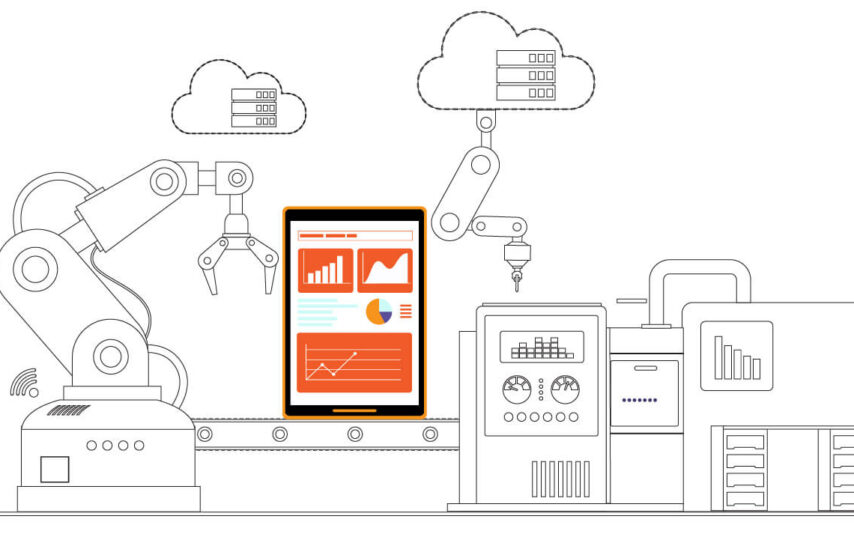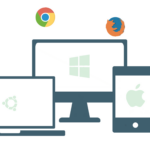The rapid advancement of technology has transformed the landscape of software development and testing, especially in mobile applications. In 2023, as the demand for mobile apps continues to grow exponentially, performing testing on Real Device Cloud has become imperative for organizations to ensure that their apps are high quality, user-friendly, and perform well across different devices and platforms.
This article will dive into the critical components of building a successful real device testing strategy in 2023.
Successful Real Device Testing Strategy In 2023
1) Embrace Diversity
To build a successful real device testing strategy in 2023, organizations must embrace diversity. This refers to the variety of devices, platforms, and testing environments. With plenty of devices available in the market, ranging from different brands, models, screen sizes, and operating systems, it’s essential to include a wide range of real devices in your testing strategy.
By embracing diversity, organizations can ensure that their app is tested on various devices that represent the actual devices used by their target audience. This helps uncover device-specific issues, such as performance disparities, compatibility issues, and user interface discrepancies. It also ensures the app performs well across different platforms, such as iOS, Android, and other operating systems.
Organizations should establish a device matrix that includes a representative sample of devices based on market share, popularity, and user demographics to embrace diversity effectively. This matrix should be updated regularly to reflect the evolving landscape of mobile devices.
Additionally, organizations should consider factors such as geographic location, network conditions, and battery life when selecting devices for testing to ensure that the app performs well under real-world conditions.
Embracing diversity also means considering different testing environments. This includes testing in other network conditions, such as 2G, 3G, 4G, and 5G, to validate the app’s performance under varying network speeds. It also involves testing in different geolocations, as apps may behave differently based on the user’s location. For example, apps that rely on GPS or location-based services may have varying accuracy and performance in different regions.
Moreover, organizations should consider testing on real devices as opposed to relying solely on simulators or emulators. While simulators and emulators can be useful for initial testing, real devices accurately represent how the app will perform on actual user devices. Real devices capture nuances such as touch gestures, sensor interactions, and hardware variations that cannot be replicated accurately on simulators or emulators.
By embracing diversity in real device testing, organizations can ensure that their app caters to their target audience’s diverse needs and preferences. It helps uncover and resolve device-specific issues, enhances app compatibility across different platforms, and validates app performance under real-world conditions. Embracing diversity in real device testing is crucial to building a successful testing strategy in 2023 and beyond.
2) Automation Is Key
In building a successful real device testing strategy in 2023, automation is a key factor to consider. Automation testing allows organizations to efficiently and effectively test their app on various devices, platforms, and testing environments, saving time and resources while ensuring comprehensive test coverage.
Automation tools and frameworks can streamline the testing process by automating repetitive tasks, such as test script creation, test execution, and result analysis. This allows organizations to run tests on multiple devices simultaneously, increasing test coverage and accelerating the overall testing process.
Automation enables organizations to scale their testing efforts by quickly adding new devices or platforms to their test suite without significant manual effort. This ensures that the app is thoroughly tested across various devices, platforms, and testing environments, including different network conditions, geolocations, and user scenarios.
Another advantage of automation is repeatability. Automated tests can be executed multiple times with the same set of inputs and expected outputs, allowing for consistent and repeatable testing. This is especially valuable for regression testing, where changes or updates to the app need to be verified against previously validated functionality. Automated tests can be easily rerun whenever needed, ensuring that the app continues to function correctly after updates or changes.
In addition, automation enables organizations to achieve faster time-to-market. By automating the testing process, organizations can identify and fix issues quickly, reducing the overall testing cycle and accelerating the release of their app. This is particularly critical in today’s competitive mobile app market, where timely releases and updates are essential to stay ahead of the competition.
Automation is not a one-size-fits-all solution. It’s crucial to strike a balance between manual and automated testing, as some testing scenarios may require human intuition and creativity to identify potential issues. For example, usability testing, exploratory testing, and user experience testing may still require human involvement to provide valuable feedback.
Organizations should invest in robust and scalable automation frameworks to implement automation effectively, choose the right set of automation tools that align with their testing requirements, and regularly update and maintain their automated test suite to keep up with the evolving mobile landscape.
In conclusion, automation is a key element in building a successful real device testing strategy in 2023. It enables organizations to efficiently and effectively test their app on diverse devices, platforms, and testing environments, ensuring comprehensive test coverage, scalability, repeatability, and faster time-to-market. However, it’s important to balance manual and automated testing to achieve the best results.
3) Test in Real-World Conditions
As an AI language model, I don’t have the physical presence to perform tests in real-world conditions. However, I can certainly help you understand how tests in real-world situations are typically conducted.
Tests in real-world conditions, also known as field tests, involve conducting experiments or trials in an actual environment where the product, technology, or intervention will be used. This allows researchers or testers to evaluate the performance, effectiveness, and safety of the product or intervention in a realistic setting instead of a controlled laboratory environment.
Real-world conditions can vary depending on the context of the test, and may include settings such as homes, offices, hospitals, factories, or outdoor environments.
Here are some general steps that are typically involved in conducting tests in real-world conditions:
- Define the research question or objective: Clearly identify what you are trying to study or evaluate in real-world conditions. This could be the performance of a product, the impact of an intervention, or the behavior of users in a particular setting.
- Develop a research plan: Outline the methodology, study design, and data collection procedures for the real-world test. This may involve designing experiments, selecting study participants, and determining how data will be collected and analyzed.
- Obtain necessary permissions and approvals: Depending on the nature of the test and the location where it will be conducted, you may need to obtain permissions, approvals, or permits from relevant authorities, such as institutional review boards (IRBs), regulatory agencies, or property owners.
- Prepare and deploy the test: Set up the necessary infrastructure, equipment, or resources required for the test. Deploy the product or intervention in the real-world setting according to the research plan. Collect data using appropriate methods, such as observations, surveys, or measurements.
- Monitor and collect data: Continuously monitor the test to ensure it is being conducted as planned, and collect data on relevant outcomes or measures. This may involve recording observations, collecting samples, or administering surveys.
- Analyze and interpret results: Once the test is completed, analyze the data collected and interpret the results. Use appropriate statistical methods or qualitative analysis to draw conclusions about the performance, effectiveness, or safety of the product or intervention in real-world conditions.
- Draw conclusions and report findings: Based on the results, draw conclusions about the performance or impact of the product or intervention in real-world conditions. Prepare a report or publication summarizing the findings, and share the results with relevant stakeholders or audiences.
It’s important to note that conducting tests in real-world conditions can be complex and may require careful planning, coordination, and adherence to ethical and legal considerations. Proper documentation, data management, and analysis are crucial to ensure the validity and reliability of the findings. Consulting with experts or experienced researchers can be helpful in designing and conducting tests in real-world conditions.
4) Consider User Experience (UX) Testing
User Experience (UX) testing is a type of testing that focuses on evaluating how users interact with a product or technology, and how it meets their needs, expectations, and preferences. UX testing is typically conducted in real-world conditions to gather insights on how real users interact with a product, such as a website, application, or device, and to identify any usability issues, user frustrations, or areas for improvement. Here are some steps to conduct UX testing in real-world conditions:
- Define the research objectives: Clearly define the research objectives of the UX testing. What specific aspects of the user experience do you want to evaluate? This could include usability, ease of use, efficiency, effectiveness, satisfaction, or other relevant factors.
- Identify the target users: Identify the target users who will be using the product in real-world conditions. Consider factors such as demographics, user preferences, and tasks they are likely to perform with the product. These insights will help you recruit the right participants for your UX testing.
- Choose the appropriate UX testing methods: There are various UX testing methods that can be used depending on the product, research objectives, and resources available. Some common UX testing methods include usability testing, user interviews, focus groups, eye-tracking, surveys, and analytics data analysis. Choose the methods that best suit your research objectives and real-world conditions.
- Develop a testing plan: Develop a plan for conducting UX testing in real-world conditions. This may involve designing test scenarios, creating test tasks or scenarios that reflect real-world use cases, and identifying the metrics or measures that will be used to evaluate the user experience.
- Recruit participants: Recruit participants who represent the target users of the product. Depending on the resources available, this may involve recruiting participants from the actual user base or using a sample of representative users. Ensure that participants are provided with informed consent and are aware of their roles and responsibilities during the testing.
- Conduct the UX testing: Conduct the UX testing in real-world conditions according to the testing plan. This may involve observing users as they interact with the product, collecting qualitative and quantitative data, and capturing feedback on their experience. Take note of any usability issues, user feedback, or patterns of user behavior.
- Analyze and interpret results: Analyze the data collected during UX testing, and interpret the results. Look for patterns, trends, and insights that can help identify strengths, weaknesses, and areas for improvement in the user experience. Use appropriate analysis methods such as qualitative coding, quantitative data analysis, or thematic analysis.
- Provide recommendations and report findings: Based on the results, provide recommendations for improving the user experience of the product. Prepare a report or presentation summarizing the findings, including actionable recommendations for design changes or improvements. Share the results with relevant stakeholders, such as product managers, designers, and developers, to inform future design decisions.
It’s important to conduct UX testing in real-world conditions to gather insights on how real users interact with a product in their natural environment. This can provide valuable feedback for improving the usability, user satisfaction, and overall user experience of the product.
5) Security and Privacy Testing
Security and privacy testing are crucial aspects of evaluating the robustness and trustworthiness of a product, particularly for software applications, websites, and other technology solutions that handle sensitive or personal data. Conducting security and privacy testing helps identify potential vulnerabilities, weaknesses, and risks that could compromise the security and privacy of users’ data. Here are some steps to conduct security and privacy testing:
- Identify security and privacy requirements: Define the security and privacy requirements that are relevant to the product being tested. This may include industry-specific standards, regulatory requirements, best practices, and internal policies. These requirements will serve as a baseline against which the product’s security and privacy posture will be evaluated.
- Determine the testing scope: Define the scope of the security and privacy testing. Consider what components or functionalities of the product will be tested, and what aspects will be excluded. This may depend on factors such as the product’s architecture, data flow, user access levels, and potential risks.
- Select appropriate testing methods: Choose the appropriate testing methods based on the nature of the product and the security and privacy requirements. Common security testing methods include vulnerability scanning, penetration testing, code review, and security assessments. Privacy testing may involve evaluating how the product handles personal data, such as data encryption, data access controls, and data retention policies.
- Create a testing plan: Develop a detailed testing plan that outlines the specific testing activities, timelines, and resources needed for security and privacy testing. This may include defining test scenarios, test cases, and test data, as well as identifying the tools or technologies that will be used during the testing process.
- Conduct the security and privacy testing: Execute the testing plan and conduct the security and privacy testing according to the defined scope and methods. This may involve using automated tools, manual testing, and other techniques to identify potential vulnerabilities, weaknesses, or privacy issues. It’s important to follow ethical and legal guidelines during the testing process and obtain proper authorization before conducting any invasive testing activities.
- Analyze and interpret results: Analyze the results of the security and privacy testing, and interpret the findings. Identify any security vulnerabilities, privacy risks, or non-compliance with the defined requirements. Classify the findings based on severity, impact, and likelihood, and prioritize them for remediation.
- Provide recommendations and report findings: Based on the results, provide recommendations for mitigating the identified security and privacy risks. Prepare a report or presentation summarizing the findings, including actionable recommendations for addressing the issues. Share the results with relevant stakeholders, such as product owners, developers, and security or privacy teams, and work collaboratively to implement the necessary changes.
- Conduct re-testing and validation: After implementing the recommended changes, conduct re-testing to validate the effectiveness of the remediation measures. This may involve re-executing the security and privacy tests to ensure that the identified issues have been addressed and the product meets the defined requirements.
Security and privacy testing should be an ongoing process throughout the development lifecycle of a product, as new threats and vulnerabilities can arise over time. Regularly assessing and addressing security and privacy risks is essential to ensure the protection of users’ data and maintain the trust of customers and stakeholders.
Wrapping Up
Building a successful real device testing strategy with LambdaTest involves careful planning, preparation, and execution. By defining clear testing objectives, selecting target devices, creating comprehensive test plans, choosing appropriate test types, and designing compelling test cases, you can ensure thorough web application testing across different devices and browsers.
LambdaTest, a unified digital experience testing platform allows you to test your websites and native applications on a wide range of real mobile devices. It provides a powerful cloud-based platform that can streamline your testing efforts and help you identify and fix potential issues early in the development cycle. With a well-structured testing strategy in place, you can ensure your web application’s quality, performance, and compatibility, resulting in improved user experience and customer satisfaction.








